With new growth and uncrowded trails, this beloved redwood park is back
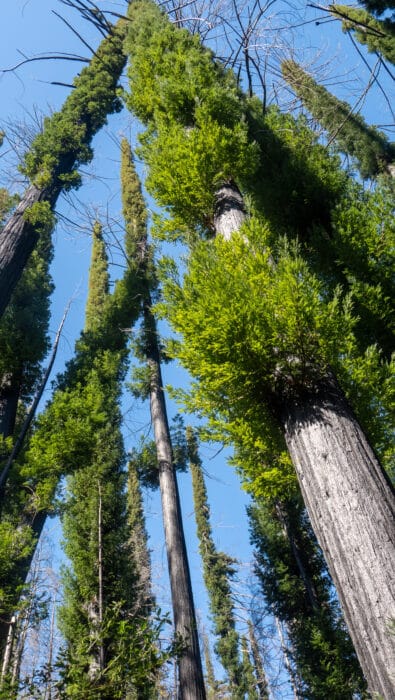
Nearly five years have passed since the CZU Lightning Complex fires devastated Big Basin Redwoods State Park, but many people are still keeping their distance from the park. “A lot of locals are hesitant to come here,” says Debra Martwick, senior visitor services aide at Big Basin. “They think it’s going to be too sad or that it’s going to be a moonscape.”
It’s true that during the wildfires’ 37-day rampage, flames ripped through 97% of the park’s 18,000 acres, destroying the forest’s lush canopy. However, what Martwick experiences at the park these days is far from tragic—it’s hopeful. While some of Big Basin remains closed, many trails have reopened and visitors will find a landscape flush with new growth. “There is something so inspiring about seeing a forest that was ravaged by fire spring back with such stunning beauty,” she says. “I call it a ‘forest of hope.’”
“It shows you the resilience of nature, which we’re all part of. Sometimes we go through horrible things, but we can recover.”
Martwick first fell in love with Big Basin during a six-month stint at the park in 2017. What she found there was different from anything else she’d encountered. She followed soft dirt paths to incredible sights, like 20-foot Sempervirens Falls. Along the trails, giant old-growth redwoods offered shade and dampened noise from the outside world. Bright green moss clung to the tree trunks, clovers carpeted the ground, and crystalline creeks flowed into the Pacific Ocean. “There’s something about Big Basin,” she says. “It’s just special.”
Work took Martwick elsewhere in the intervening years, but she missed her beloved park. After Big Basin partially reopened to the public in 2021, she jumped at an opportunity to return. “It’s a whole different experience since the fire,” she says. But to Martwick, different doesn’t mean bad. It’s an exciting chance to witness the forest’s renewal.
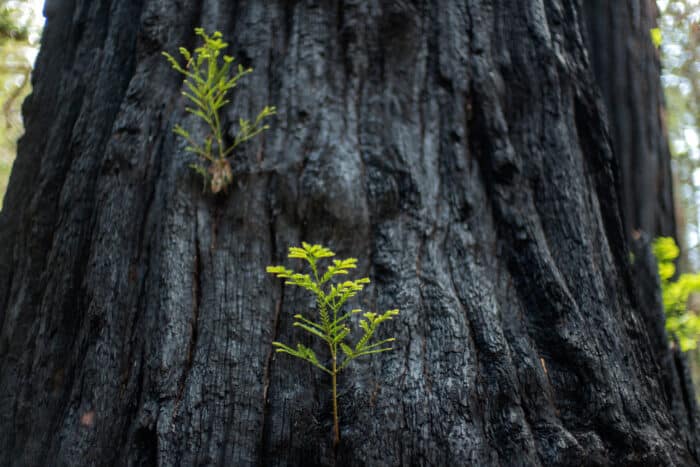

Redwoods lead the park’s revival
Already, verdant ferns, shrubs, and foot-tall Douglas-fir have pushed their way through the soil at Big Basin. Birds were among the first animals to rebuild their homes, and visitors can now hear the welcome calls of dark-eyed juncos, Steller’s jays, and endangered marbled murrelets. Black-tailed deer, gray foxes, bobcats, and other four-legged creatures also roam the forest once more, and banana slugs slime their way across trails.
Most impressive, however, are the coast redwoods. Not only did 97% of these trees survive the fire—incredible, especially when compared to the decimation of the park’s Douglas-fir––but they are growing back at a phenomenal rate. Saplings have sprouted in a circle from the roots of their elders (in what are endearingly called “fairy rings”) and some of these redwood trees now soar to 20 feet or higher. “They already tower above me,” says Martwick.
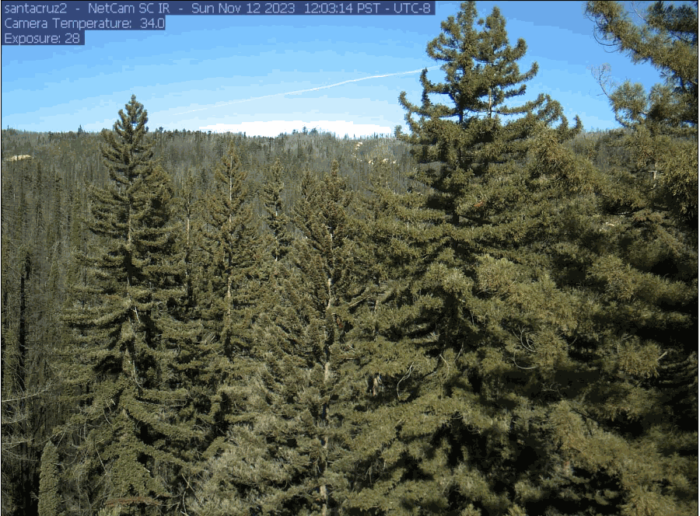
In a study funded by the League, scientists discovered another remarkable adaptation. After collecting samples from ancient redwoods that had been engulfed in the flames, they found that the trees were resprouting from buds that had lain dormant for centuries. “They’re such an example of survival,” Martwick says. “But then again, they’ve been on this planet for millions of years. They’ve had a lot of time to get it down.”
To help ensure the park stays on its valiant road to recovery, the League has collaborated with California State Parks and a broad coalition of partners to develop a comprehensive Forest Management Strategy that balances ecological restoration with visitor safety. The plan includes thinning unnaturally dense stands, promoting the growth of larger trees, and using controlled burns to mimic the natural fire patterns that were suppressed in California for well over a century.
Opportunity to explore uncrowded trails
While life has returned to the park, the large crowds have not. Prior to the fire, 1 million people visited annually. Today, around 3,000 to 9,000 visit each month, according to the Los Angeles Times. Those who do venture into the park have a unique opportunity to wander through recovering old-growth groves on blissfully unpopulated trails.
Martwick suggests stopping by the park visitor center or chatting with kiosk staff to find the hike best suited to your level and interests. The Redwood Loop is a 0.6-mile, ADA-compliant route that passes the tallest tree in the park, the Mother of the Forest, which is charred but still living. The Meteor Trail, which runs through redwood stands along Rogers Creek, is one of Martwick’s favorites. “But to be honest, they’re all beautiful,” she says.
It’s worth noting that Rancho del Oso, the park’s coastal section, was unaffected by the fire and currently offers views of its beachside marsh and the ocean via the Hoover Trail. Five walk-in campsites and a first-come, first-served bike site are also available.
Martwick wishes more people would hit the trails to witness the forest’s renewal firsthand. “People expect bleakness, but it is the opposite. It gives you hope for the future,” she says. “Sometimes life throws you a curve, but if you can survive it, you can bounce back—maybe with a few scars and a little char.”
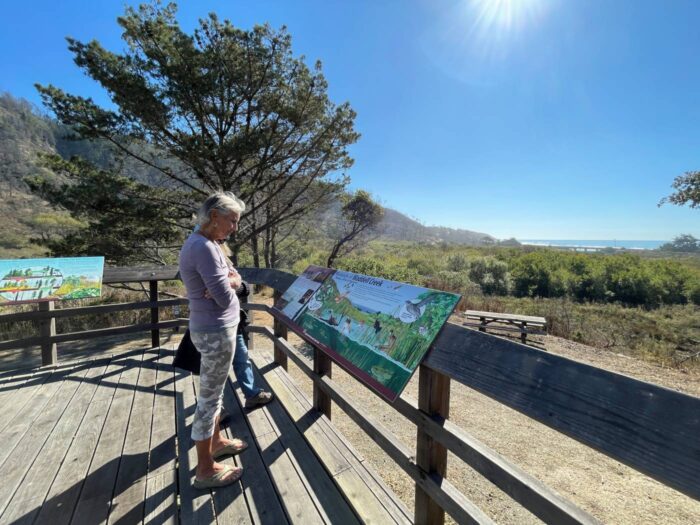
Know before you go
- Check out the park’s website to see which roads and trails are currently open.
- Parking spaces are still greatly limited, and spots fill up quickly on weekends and holidays. Reserve a space ahead of time to ensure your entrance and save $2 on the $10 parking fee. No fees or reservations are required for those arriving by foot, bike, or bus.
- Rancho del Oso has no fees or reservation requirements for day trippers. Reservations are necessary for the walk-in campsites.
- The forest canopy is not fully filled in, so be sure to bring sun protection.
- Don’t be alarmed if you see workers removing vegetation. Currently, there is an overabundance of combustible material, and this accumulation needs to be removed to help avoid another devastating fire.


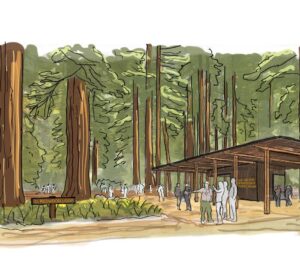


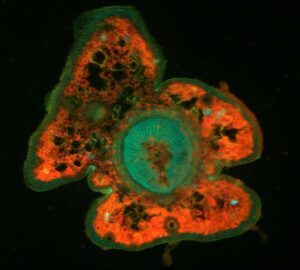
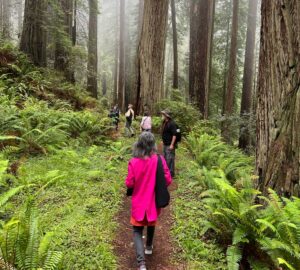
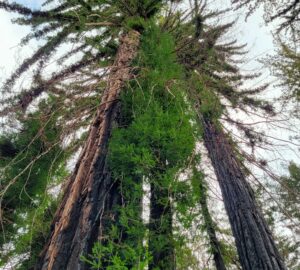
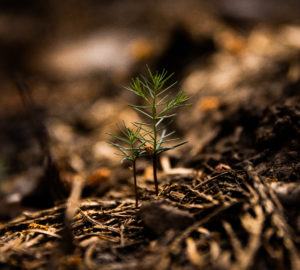
2 Responses to “Post-fire Big Basin offers visitors a “forest of hope””
Bob Miller
Just for your information, Austin Creek State Park, which is adjacent to Armstrong Woods State Reserve in Sonoma County just opened. It was severely damaged by the same set of fires in 2020. It is an area that starts in the redwoods and goes into miles of hiking through chaparral and oak woods. I can’t wait to see the wildflowers there. Nature is AWSOME and our state parks are there for all of us to enjoy.
Bruce McConnell
The regeneration at Big Basin is a spectacular illustration of Redwood Resilience. We were there two years ago and already the daughter trees were over six feet high, and the burned matriarchs were sprouting new shoots all over. I can’t wait to go back!!